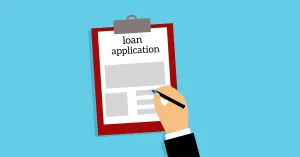When the first round of PPP loans was offered by the US government last year, we wrote a detailed post on the Rules of Thumb blog from MoneyThumb explaining what private lenders need to know to be able to offer PPP loans to borrowers.
Now the second round of PPP loans is on offer from Uncle Sam and the information in that blog post is still totally relevant. We strongly advise private lenders to read it in order to smooth the process of becoming a PPP lender. Today we would like to also offer some important additional information that private lenders need. That is understanding what underwriting requirements private lenders should follow in order to comply with PPP and SBA rules. Those requirements are listed below:
- Review Borrower Application.
- Confirm receipt of Borrower certifications contained in the Applications.
- It is the Borrower’s responsibility to determine if any of the affiliation rules apply to them.
- Confirm receipt of information demonstrating Borrower had employees for whom Borrower paid salaries and payroll taxes on or around February 15, 2020.
- Confirm the dollar amount of average monthly payroll costs for the preceding calendar year by reviewing the payroll documentation submitted with the application.
- Lenders are expected to perform a good-faith review, in a reasonable time, of the Borrower’s calculations and supporting documents concerning average monthly payroll cost.
- If Borrower uses a third‑party payroll processing service, Lender should request payroll documentation provided by the payroll provider that indicates the number of wages and payroll taxes reported to the IRS by the payroll provider for the Borrower’s employees, including:
- Schedule R (Form 941);
- Allocation Schedule for Aggregate Form 941 Filers, attached to the payroll provider’s Form 941;
- Employer’s Quarterly Federal Tax Return, if available;
- If the above is not available, the Borrower should obtain a statement from the payroll provider documenting the number of wages and payroll taxes.
- Follow applicable Bank Secrecy Act (“BSA”) requirements:
- Federally insured depository institutions and federally insured credit unions should continue to follow their existing BSA protocols when making PPP Loans.
- Not required to re‑verify existing customers unless otherwise indicated by the institution’s risk‑based approach to BSA compliance.
- If federally insured depository institutions and federally insured credit unions eligible to participate in the PPP program have not yet collected beneficial ownership information on existing customers, such institutions do not need to collect and verify beneficial ownership information for those customers applying for new PPP Loans, unless otherwise indicated by the Lender’s risk‑based approach to BSA compliance.
- If entity not presently subject to BSA compliance, required to establish a compliance program.
- Review Application Form.
By following the above underwriting guidelines, and taking advantage of the linked Rules of Thumb blog post above, private lenders should have no problem successfully providing PPP loans to borrowers. These loans are SO important to help get small businesses back in the black after the devastation wrought by the pandemic.
Another way private lenders can smooth the process of loan decisions is by using PDF Insights from MoneyThumb. If you are a private lender who is not yet using this proprietary software, please take a few minutes to learn more about PDF Insights here and request a live demo. In under 5 seconds, PDF Insights will produce an underwriting scorecard to demonstrate the creditworthiness of your applicants. What an amazing time saver!





















Add comment